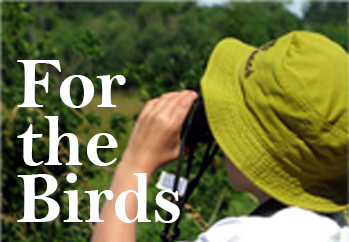Birding by Train: As Seen Along the Hudson Line
Opinion Advocates for ideas and draws conclusions based on the author/producer’s interpretation of facts and data.
 By Brian Kluepfel
By Brian Kluepfel
Those who’ve seen the film adaptation of David Mamet’s “Glengarry, Glen Ross” will never forget Alec Baldwin’s brilliant monologue to his real estate team, ending with the mantra: ABC.
“ABC. Always Be Closing,” Baldwin scrawls on a blackboard and shouts at his reluctant salesmen. It is one of my favorite cinematic moments.
We birders have a similar mantra/acronym: ABB. Always Be Birding (No, music lovers, not The Allman Brothers Band.)
Wherever you are, with or without binoculars, you can be birding. It’s a hobby that travels well.
I was reminded of this on the Friday of the past holiday weekend, when the missus and I took a train trip up the mighty estuary of Hudsonian fame to Beacon. Seemingly hundreds, perhaps millions, of people took Metro-North that day – many of them parents, desperate to find something to do with their children on the first week of summer vacation.
I would surmise that few of these fellow travelers were birding.
Yet a train trip along the river offers incredible wildlife-viewing opportunities. The corridors between the tracks and the river are often no-man’s land terra incognito, ripe for any species willing to withstand the rumble and commotion of the rails.
Since our transit systems, including trains, tend to follow the old river systems (Harlem Line, Hudson Line, etc.), the most ancient travelers’ routes, it goes to follow that one can see birdlife aplenty just peeking out the window. Once, many years ago, I was stunned to see a great horned owl at midday, perched on a stump somewhere between Valhalla and North White Plains.
Actually, mass transit birding can begin the moment you walk to the platform. All sorts of birds hang around stations, including the ubiquitous pigeon and mourning dove. But at a place like Croton-Harmon there are also seagulls, ravens, crows and even ospreys occupying a nest atop a communications tower, smack-dab in the middle of the parking lot.
Once on the train, proper birding etiquette, (in this case, marriage etiquette) requires that you ask your partner if they would like the window seat, aka the birder’s seat. A few years ago, on a trip from Beacon to Ossining one rainy Sunday, I spied seven great blue herons along the shoreline. (I think the rain scares up fish for them.) So, the window seat can be crucial and should be negotiated with aplomb, and diplomacy, if possible.
Below is a short, unofficial list of avian and other species seen between the Beacon and Croton-Harmon stations on July 5:
- Two bald eagles, one rather raggedy. (Our emblematic bird has bad hair days, just like the rest of us, and it was danged hot on Friday.)
- Hundreds of Canada geese, Peekskill waterfront, flanked by fisherman. (Note: Several of these were juveniles, babies recently born. Nesting season can be an exciting time.)
- Two great blue herons taking off in the wake of an oncoming train. (Their wingspan seems so majestic when they take off and you can see their reflection in the water.)
- Perched painted (painter) turtle. (You’ve got to keep your eyes open for all manner of wildlife; turtles often make it easy by posing on exposed logs and stones.)
- Perched double-crested cormorant. (They have to spread their wings to dry, so often are easy to spot.)
- Many crows. (Did someone say counting crows? I certainly did not. That would be a horrible joke.)
So, as the great philosopher Lawrence Peter Berra once noted, “you can observe a lot just by watching.” This is true of birding, train travel and of life in general. Happy birding everyone.
Ossining resident Brian Kluepfel is a correspondent for the Lonely Planet travel series, Birdwatching Magazine and many fine publications such as this one.

Examiner Media – Keeping you informed with professionally-reported local news, features, and sports coverage.
